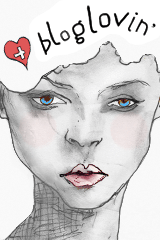Korea has a massive make up industry that prides itself on offering affordable, high quality make up to women. In fact the Korean Times states that skin care and beauty exports have increased by 1500% over the last 15 years. In a country that is fairly image obsessed with one of the highest plastic surgery rates in the world, its no surprise that make up is king.
Recently I asked a number of native teachers what they felt were the best and most affordable make up products in Korea for foreign complexions. Here's what they thought:
Foundation
Nature Republics BB came out as a winner for foreign complexions, I myself use their BB Cermid cream as it provides good coverage without feeling like you are 'wall papering' your face. It also keeps my skin relatively well moisturized, contains an SPF of 25 and is extremely easy to apply and blend.
11, 130 w ($11)
Foreigners with darker complexions complained that they had to search for months before they could find a foundation that matched their skin tone in Korea. Many agreed that they had to have foundation sent from overseas stores, simply to find a color that matched. However, Nature Republic's CC Super Origin Cream was suggested as one of the better option as it comes out a white liquid and tints to match your skin tone as you blend it. It also does not have a whitening component to the cream that is so often found in other products. 14,000 w ($13)
Mascara
A number of foreigners as well as my co-teacher swore by the 'Super Cara' mascara by Holika Holika, as it does the same job as Mac or Loreal - but at a fraction of the price. The mascara boldens and lengthens without the lashes clumping together. It is also easy to wash off with remover. Holika Holika also carries a few other mascaras in the Super Cara line,
7,900 w ($7)
My Black Liquid Art Pen by Missha came out tops as an easy to find and inexpensive Korean alternative. Many foreigners argued that it was borderline impossible to find an eyeliner that was dark enough, easy to apply and lasted through out the day on the Korean market. So often other products ran dry, came off too easily or the applicator wand was too small. However, the liquid liner by Missha seems to beat the odds at 15, 500 w ($15)
Eye shadow and Lipstick
If your looking for cheaper lipsticks and eye shadows, Etude House is the place to go. Considered one of the cheaper make up lines on the market, Etude has an array of funky colours and shades to pick from. A tip for eye shadow shopping is to pick a few individual shades and ask the assistant to put it into a pallet for you. It will only set you back another 2 or 3000 won ($ 3) but will keep all your favorite shades together in one easy to use container.
Eye shadow at 3500 w ($3)
Blusher
Need a spruce of pink on the cheeks? An affordable option is The Faceshop's Cushion Blusher. The blusher comes with a pillow for dabbing and runs in a couple of different shades. For my personal complexion Coral is the best tint. 5,900 w ($5)
Nails
Nail polish can be found at almost any make up store in Korea. The best range for colours on the market? Etude House. According to some of the foreigners I spoke to, it is always best to spend 3000 won or so extra and get your favorite color in the gel line, as it lasts much much longer. Etude House's Enameliting Gel nail line insures that your fingers will be less prone to chips and breaks throughout the week.
5,500 w ($ 5)
Cleanser and Make up wipes

In this dusty weather, Tony Molly's Dust Out Multi Foam Cleaner and wipes were most popular among some of the foreigner I spoke to. During spring, chemical yellow dust brought across through high winds from China can severely effect allergies and skin. Tony Molly's cleaner aim to clear out any yellow dust or dirt with deep cleaning balls found in the solution. A friend teacher said that this cleanser had really helped her to rid her face of constant yellow heads.
8,000 w ($7)
Moisturizer
Most foreigners suggested lots of different products but argued that a good and often slightly more expensive moisturizer was needed for the cold, dry winter months. I personally use The Faceshops's Mango Seed Moisturizer. Although it slightly more pricey, I feel that it is well worth it. After my first December in Korea, my skin had began to peel and flake on my cheeks because I had spent so much time under a heater and out of the sun. The Mango seed moisturizer helps to keep my skin hydrated without being too oily or thick. I would recommend it in the winter months.
24,000 w ($23)
Can you think of any other products that are better?
























